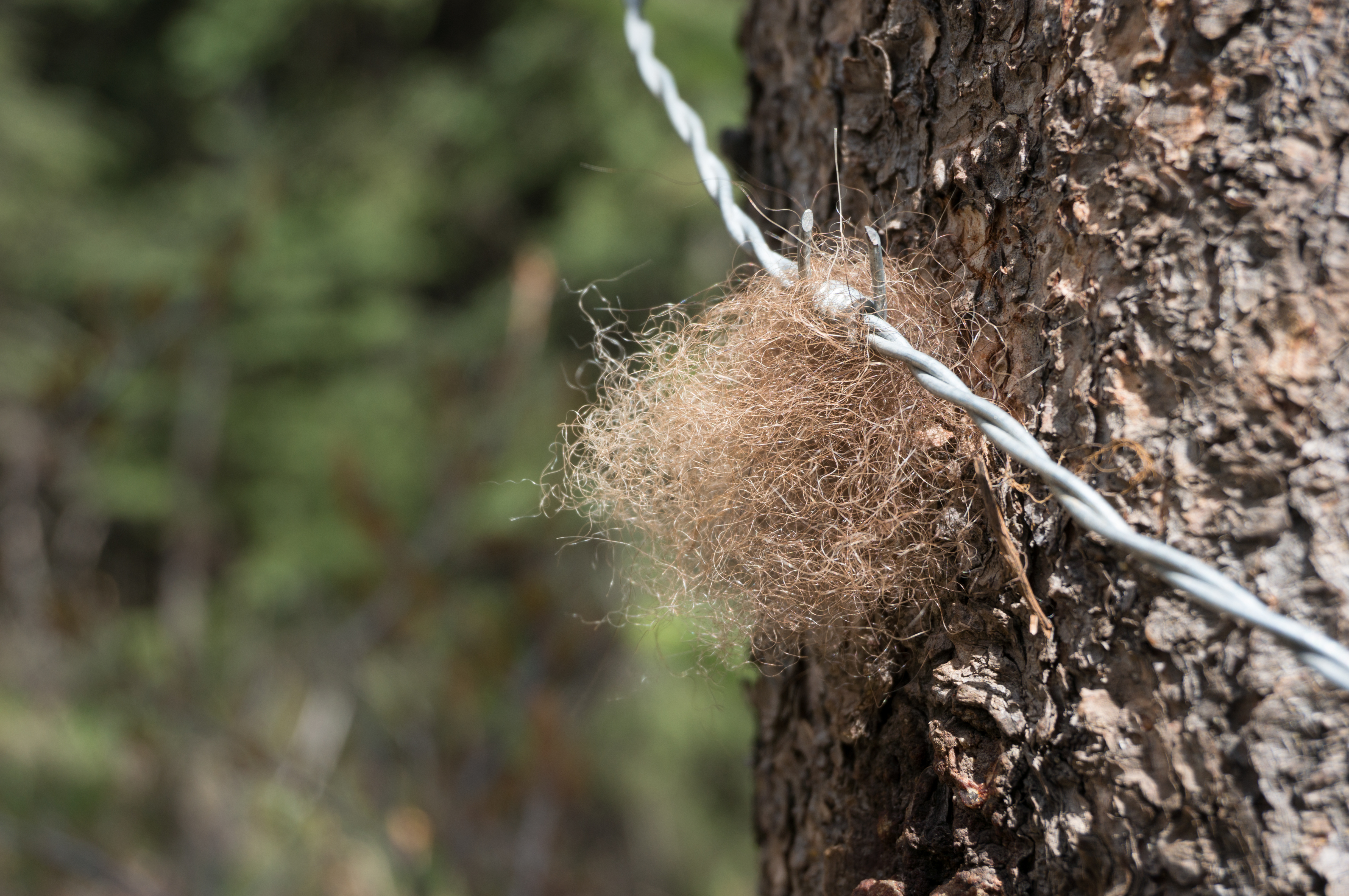Genetic sampling
The SRGBP uses genetic sampling in a variety of ways to gather data for our research. In addition to the tissue samples taken during live capture from the bears, both bait sites and rub trees are used to collect hair samples from bears within the study area. Standard methods are used to produce genetic fingerprints and assign each bear a unique identity. Gender is also assigned using generic analysis. This non-invasive method of sampling not only allows the SRGBP to identify individuals and gender, but estimate populations size, population growth and in some cases dispersal. Genetic sampling allows the tracking of many more individuals than is possible using radio-collaring.
We have sampled the Flathead using rub trees and bait sites since 2008, and the South Rockies have been sampled since 2006. Bait sites and rub trees are spaced evenly across the study area where possible. Genetic samples have also be used to compare genetic diversity among neighboring populations, assign parentage, calculate individual fitness, and identify individuals that have moved out of their birth population.
Bait sites and rub trees are both ways in which scientists from SRGBP collect hair, and the DNA it contains, for genetic analysis and isotope sampling.
Bait sites

Bait sites are locations where hair can be collected from bears using barbed wire. In the center of the bait sites there is usually a stacked formation of logs on which the bait can be placed. The bait used in our study area is rotten cows blood. This extremely detectable smell will attract bears in the local area, who will come to investigate. Around the bait site barbed wire is placed in a triangle or square formation essentially forming a thin fence of wire. When bears come to investigate the bait site their hair is often caught and snagged on the surrounding wire. This hair can then be later collected for analysis.

Rub trees
Similar to bait sites, rub trees are another way for scientists to collect hair from bears using barbed wire. Instead of building a fence around a bait site, rub trees feature barbed wire wrapped around the trunk of the tree. It is thought that male bears use rub trees to scent mark within their territory, although female bears have also been observed to use rub trees. Scientists are able to identify trees which are used regularly and these are the trees that are used to collect hair samples. As with the bait sites, hair is caught on the wire wrapped around the tree and this hair is later collected by our scientists or volunteers for later analysis at the lab.